PRODUCT
SOLUTIONS
- BY INDUSTRY
- B2B SaaS
- eCommerce
- E-learning
- Publishing
- BY BUSINESS SIZE
- Startup
- ScaleUp
- Enterprise
- BY BUSINESS MODEL
- Self-serve
- Sales-driven
CHARGEBEE RETENTION
Getting Started with Subscription Billing Software
Billing is a process that dates back to about 3000 BC when the Mesopotamians used the cuneiform script on clay tablets to record transactions. And since then, it has remained an integral component of a business.
Billing also plays a pivotal role in customer relationships, apart from the obvious function of getting the cash register clinking. It ensures that the customers get to know what they pay for, when, and why.
And in a business where it gets promoted from a one-off affair to a recurring event, it becomes all the more noteworthy. For a subscription business, billing software is the hub of the subscription wheel that holds multiple spokes (like subscription management, billing, invoicing and accounting, payment processing, fraud management, et cetera) together. It ensures that the wheel keeps spinning smoothly and steadily so that your business can efficiently climb the mountain of growth.
And this guide is all about helping you do just that - get on the right billing launchpad.
First, we need to get a couple of terms out of the way.
What is Subscription Billing?
Subscription billing is the process of billing customers for their subscriptions on a recurring basis. At its core, subscription billing comes down to identifying:
Who needs to be billed?
What subscriptions/products do they need to be billed for?
How much should they be billed (pricing model)?
When they need to be billed (billing cycle)?
How do you collect payments?
How does the subscription data need to be reported for analytics and accounting?

What is Subscription Management?
Subscription management is the process of managing your subscribers and their preferences across their lifecycle. A subscription management software stores your product catalog, their prices, your subscribers' data i.e. their subscriptions, any addons, history of their transactions, and billing cycles.
This also includes managing trials, grandfathering in the event of a pricing change, trial-to-paid upgrades, downgrades, and cancellations across the entire subscription lifecycle.
As you can imagine, recurring billing and subscription management go hand in hand.
You'll see in the later sections that subscription billing can have far-reaching consequences across your revenue operations down to revenue recognition.
What does a Subscription Billing Software do?
The primary (and the obvious) attribute:
Enabling and streamlining the billing process for you and thereby giving you the ability to realize the fruits of your labor - the labor of acquiring and serving your customers.
Simply put, collecting payments from your customers through a flexible range of payment options (credit cards, debit cards, PayPal, Amazon Payments, ACH, wire transfer, checks, cash, etc.).
The not-so-obvious, but equally significant attribute:
Managing and, where possible, automating the operational side of subscription management and billing i.e.
Checkout (trials, freemium, compliance)
Subscriptions (pricing models, customer portal, grandfathering)
Billing (logic, schedule, calculations - prorations, discounts, credits, taxes)
Invoicing (format, who-to-invoice, transactional emails)
Collections (payment methods like PayPal, Amazon Pay, dunning/transaction recovery)
Accounting ( integrations, reconciliation, A/R, Rev Recognition, Deferred Revenue)
Analytics (accurate real-time saas metrics, reports)
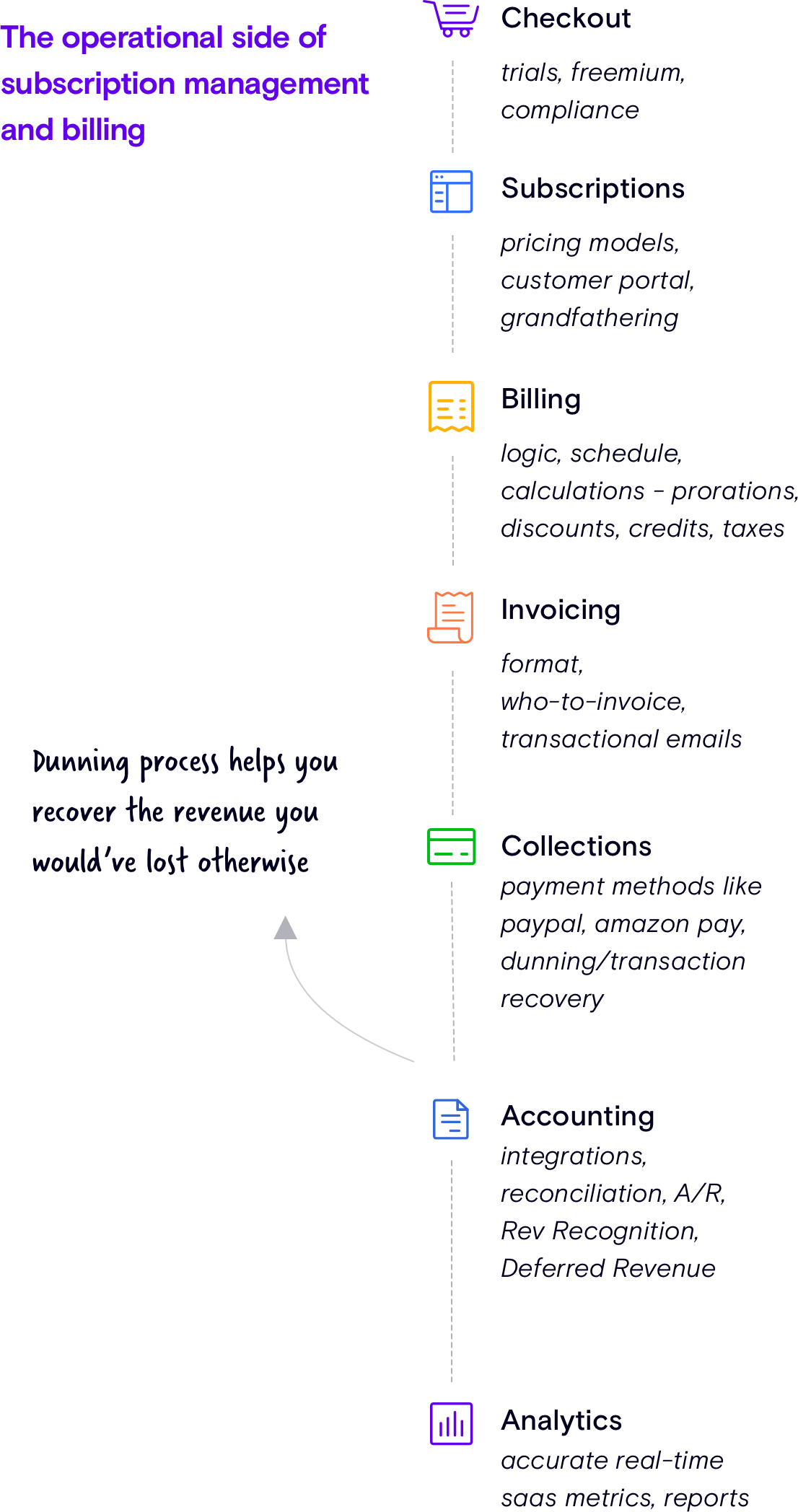
You'll notice these are tasks that would otherwise require a developer(s) to dedicate considerable effort in first setting up and later maintaining the codebase. The subscription software can turn an inconvenient hassle into a business advantage to drive growth by providing these capabilities out of the box.
To give you a sense of the broad capabilities of subscription billing software, here's a comparison as seen in G2Crowd.
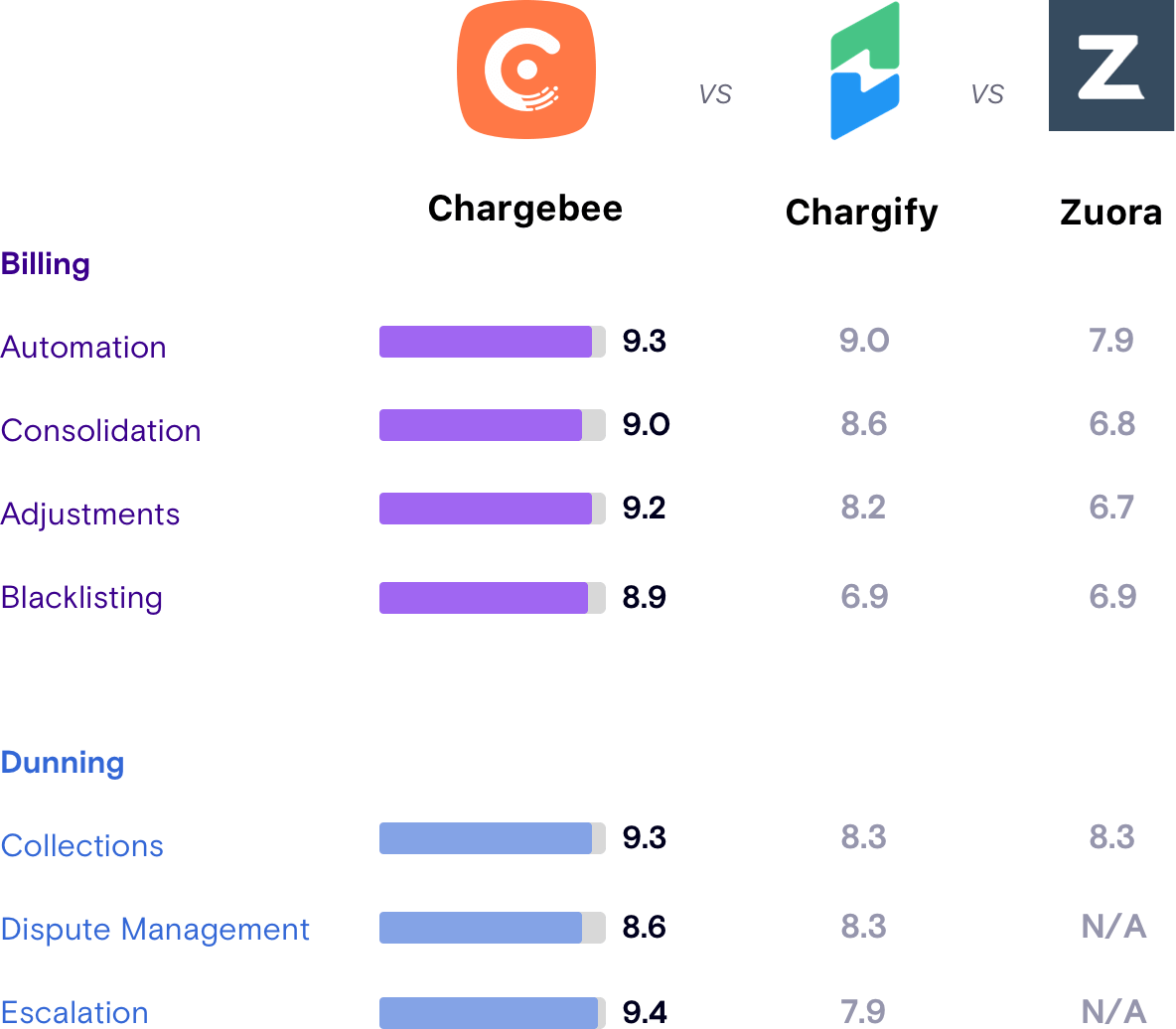
Subscription billing platforms work on top of payment gateway(s), triggering charges to a customer's card or bank as dictated by the billing logic configured within.
Subscription Billing Platform vs Payment Gateway
“If there's one reason we have done better than our peers in the Internet space over the last six years, it is because we have been laser-focused on customer experience, and that does matter, I think, in any business. It certainly matters online, where word of mouth is so very, very powerful."
Jeff Bezos, Founder, and CEO, Amazon.com
That quote right there would pretty much justify the "why?" when it comes to a choice between a subscription billing platform and a payment gateway. Customer experience is of foremost importance for any business, and this only gets amplified for a SaaS or subscription business, where concerns like "churn" and "customer retention" take the foreground.
With capabilities that minimize friction across every stage of a subscriber's lifecycle, your subscription management and recurring billing system should help you provide a stellar subscription experience.
Some payment gateways have also built out basic modules for handling subscription management to help small businesses out. While you may get started with the same product for both gateway and recurring billing, as a growing business, you will soon outgrow their modest billing capabilities. Since the payment gateway market is much larger than the subscriptions market, it's genuinely hard for them to specialize in subscription billing.
From a strategic point of view, there is another fundamental advantage that billing software has over a gateway. Recurring billing systems are designed to be integrated with multiple payment gateways and payment methods. This helps in two fundamental ways:
Market expansion through a variety of payment methods, and
Reducing the risk of high payment failures that come with being tied to a single payment gateway.

Here's our 3-page guide that shows the differences between a gateway and subscription billing software.
When it comes to your subscription business, a payment gateway focuses on receiving payments, and a subscription billing software focuses on managing your subscriptions (who are also your customers).
In essence, the subscription billing solution makes your payment gateway smarter and smarter is better.
Should I Build my Own Subscription Billing System or Buy One?
Most subscription billing companies are at crossroads when it comes to building their billing system or using one of the market's available solutions. Building billing in-house may appear to be the most cost-effective option initially. However, it is an inefficient solution in the long run for the following reasons:
Managing Expanding Customers
Each additional subscriber, pricing change, support for different payment methods, upgrade and downgrade requests, flexible billing, and prorations will add exponentially to the code complexity as you scale. Running an in-house billing system will feel like running a second product within your core product, which leads us to the second reason.
Sensitivity to Time
Any SaaS or subscriptions company looking to scale quickly should be able to experiment with pricing, discount coupons, and trial management in a timely manner. However, because there is a significant operational reliance on company resources to maintain a homegrown billing system (which is still not as powerful as a third-party recurring billing solution), it could take months or longer. And when you take longer, agility goes out the window and you lose out on competitive advantage.
Security & Compliance
Aside from operations, there is also the issue of security. Compliance with PCI-DSS (guidelines for securely processing, storing, and transmitting payment card data), broader regulations like the GDPR (standardized data protection law across EU), PSD2 compliant payments, and GAAP compliant accounting is required if your billing system collects sensitive payment and personal information.
It is preferable to use pre-existing recurring billing platforms rather than build your billing on these grounds. A robust subscription management tool can streamline your recurring billing, plug revenue leaks, and make subscription management a breeze with features as stated below.
Advanced Calendar Billing
Recurring and Advanced Invoices
Account Hierarchy (Parent-Child)
For a better understanding of the capabilities of a subscription billing platform, let's delve into the product-level and service-level capabilities you should look for in a recurring billing system.
What Should You Look for in a Subscription Billing Platform?
A good subscription billing solution goes far beyond just being 'software'. For a product/service that's as influential in your business growth as it is, service-level indicators are just as crucial as feature-level indicators. Let's look at each separately:
Product capabilities
Service capabilities
Product Capabilities Expected of a Subscription Billing Platform
Subscription Management
From the moment a user hits your checkout page to forever after, 'change' will be a constant in their lifecycle. Some changes are a reflection of their evolving preferences - upgrade, pausing, or canceling their subscription. And there are changes brought about by your business preferences - a pricing change, discount coupons, trial and freemium experiments, and so on.
To handle the volume of such changes across a growing subscriber base, you need a system that's equipped for today and tomorrow.

Here are some questions to keep in mind:
Can it support subscription plans that vary based on pricing, contract length and include benefits or addons?
Will you be able to manage trials and offer promotions/free trials for a configurable duration?
Does it support recurring, everyday business operations(refunds, write-offs, manual overrides, etc.) with search/sort filters for customer accounts and invoices?
Does it allow you to manage coupons, discounts, and promotions easily?
How easy is it to take actions like re-activating or canceling a subscription?
Does the solution support customer self-service?
Can the emails be customized to reflect your brand?
Does the email module support language localization and segmentation?
Can you track upgrades, downgrades, and new sign-ups that come in through email campaigns?
Here's a look at the feature-set you want to see in a subscription management system.
Subscriptions Lifecycle Management
Supported Pricing Models, Plans and Addons
Discounts, Coupons, and Gift Subscriptions Management
Trial Management - Free and Paid Trials
Segmented Email Notifications
Scale Subscription Management with Effortless Ease
Recurring Billing
Recurring billing can snowball from a harmless CRON job into a messy patchwork of code that needs continual tweaking and a roadmap all for itself.
Furthermore, since billing is inherently tied to pricing, you want a recurring billing system that can adapt as your pricing evolves. True, it sounds like insurance; but this is insurance you will undoubtedly cash multiple times through the lifecycle of your product.
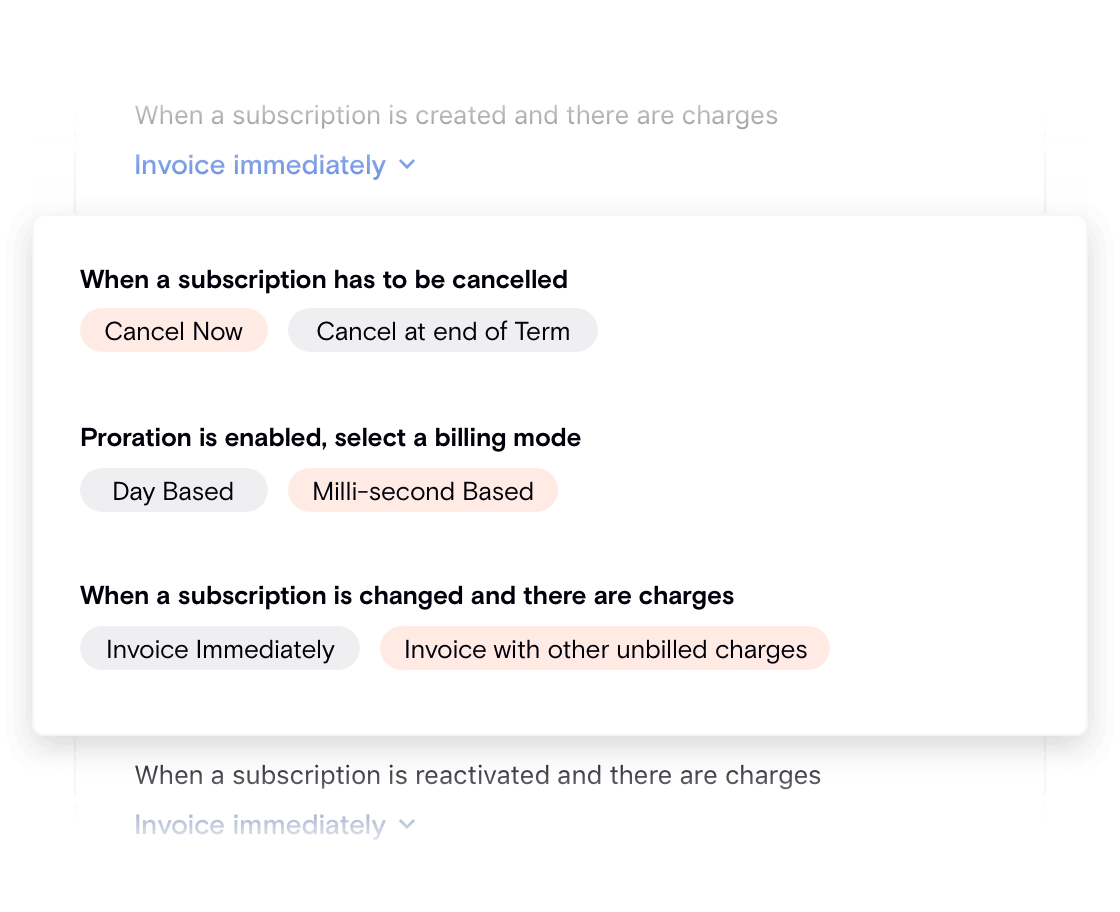
Here are some questions to help you grade the maturity of a platform:
Can the recurring billing software support one-time, recurring and usage-based charges? Will a single plan be able to include one or all of these charge types?
Will you be able to set up a varying (weekly, monthly, quarterly) subscription payment schedule?
Does it support the delivery of invoices across channels like email and web?
Does it provide a payment term for your customers to pay you back (NET terms)?
Can the invoices be customized to include client branding?
Are there configuration options for generating a line item or an invoice? (e.g., as purchased, set monthly or yearly date)
Does it support manual adjustments to invoices and their line items?
Does the system allow for flexibility based on fixed/customer/subscription-specific billing dates?
Say Goodbye to Messy Recurring Billing
Recurring Payments
This is the module that puts money in the bank - the collections module. Subscription billing systems integrate with multiple payment gateways and support various payment methods - credit cards, wallets, bank transfers, offline. If you have a largely self-serve subscription business model, you'll likely need to support multiple gateways. On the other hand, if you have a solid sales-driven model, you'll need support for wire transfers, cheques, and other offline payment methods.
Does it let you customize your checkout page with PCI compliance?
Does it support multiple payment providers?
What payment methods does it support?
Does it support payment method tokenization and migration?
Does the system support intelligent payment gateway routing for varying scenarios (location/ invoice amount/product-based)?
Does the system support fraud detection and prevention mechanisms?
Can it enable offline payments?

Does it let you customize your checkout page with PCI compliance?
Does it support multiple payment providers?
What payment methods does it support?
Does it support payment method tokenization and migration?
Does the system support intelligent payment gateway routing for varying scenarios (location/ invoice amount/product-based)?
Does the system support fraud detection and prevention mechanisms?
Can it enable offline payments?
Here are the feature level capabilities you should be looking for
Customizable checkout page
Smart Routing Payments
The Smartest Way to Automate Recurring Payments
Dunning Management
Some of the perks of having this feature is not having to manually check accounts for declined charges, automatically retrying failed payments when they're most likely to go through, letting the customers know about declined payments, and easily keeping track of all of these actions. This is especially true for subscription businesses with a high volume of transactions.
[Here's our extensive guide on 23 tactics you could employ to reduce involuntary churn.]
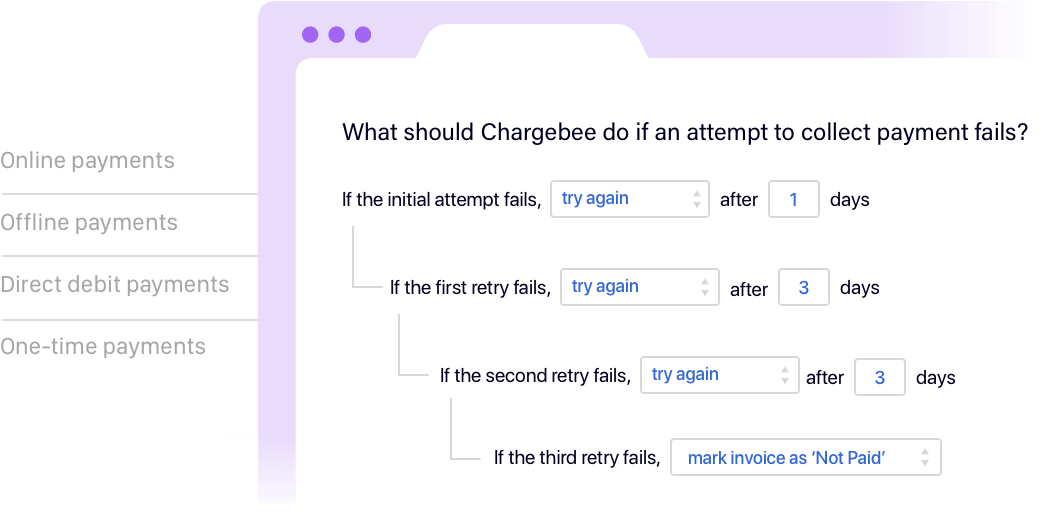
Here are some questions to keep in mind while evaluating the dunning feature:
Is there an automated process to retry failed payments?
How does it ensure payment retries are attempted when it's most likely to succeed?
Can the system automate in-app and email reminders for subscribers whenever their payment methods are about to expire?
Can these dunning emails be customized and their schedules configured?
Does the system support hosted and in-app payment pages that allow subscribers to update their payment information securely?
Does the system support different retry cycles for soft/hard declines?
On a feature level, here are some features to look for:
Customizable dunning emails and schedules
Make Way For Revenue Opportunities With Smarter Payment Recovery
Accounting and Taxes
As the source of truth for billing and payment information, the recurring billing system takes the responsibility to seamlessly sync with your accounting system. Everything from plans, addons, discounts, coupons, credit notes, and even ad-hoc charges must be mapped correctly.
You'll also expect your billing platform to automatically calculate tax based on the region you are selling into - be it US sales tax, Australian GST or EU-VAT.
[EU-What? Here's our easy guide on how to tackle EU-VAT]
Compliance with GAAP and IFRS is just as crucial for accurate deferred revenue reporting and revenue recognition.

Some questions that will help you judge a recurring billing system:
Will the system let you apply and manage taxes based on destination or where you're registered?
Does billing information map seamlessly into your preferred accounting system?
Does the system handle sales taxes automatically - including calculation and verification?
Feature-level capabilities you should be looking for:
Subscription Accounting Integrations (Xero, QB, etc.,)
Automated Tax Management (Sales Tax, EU VAT)
Deferred Revenue Accounting
Automatic Payment Reconciliation
Drive accuracy to your subscription accounting. To the dime, every time
Reporting and Analytics
As the system that collects revenue, you should expect deep analytics and a wide range of reporting capabilities from your subscription billing platform.
Based on reports on checkout abandonment, metrics like MRR/ARR/Churn, and deferred revenue reports, you can drive significant business decisions. As such, it should provide reporting accuracy along with diagnostic capabilities to dive deep and analyze. By tracking the right KPIs you can make better financial decisions (identify revenue leakages and opportunities), better marketing strategies (identify promotional returns and analyze campaign outcomes), and the like.
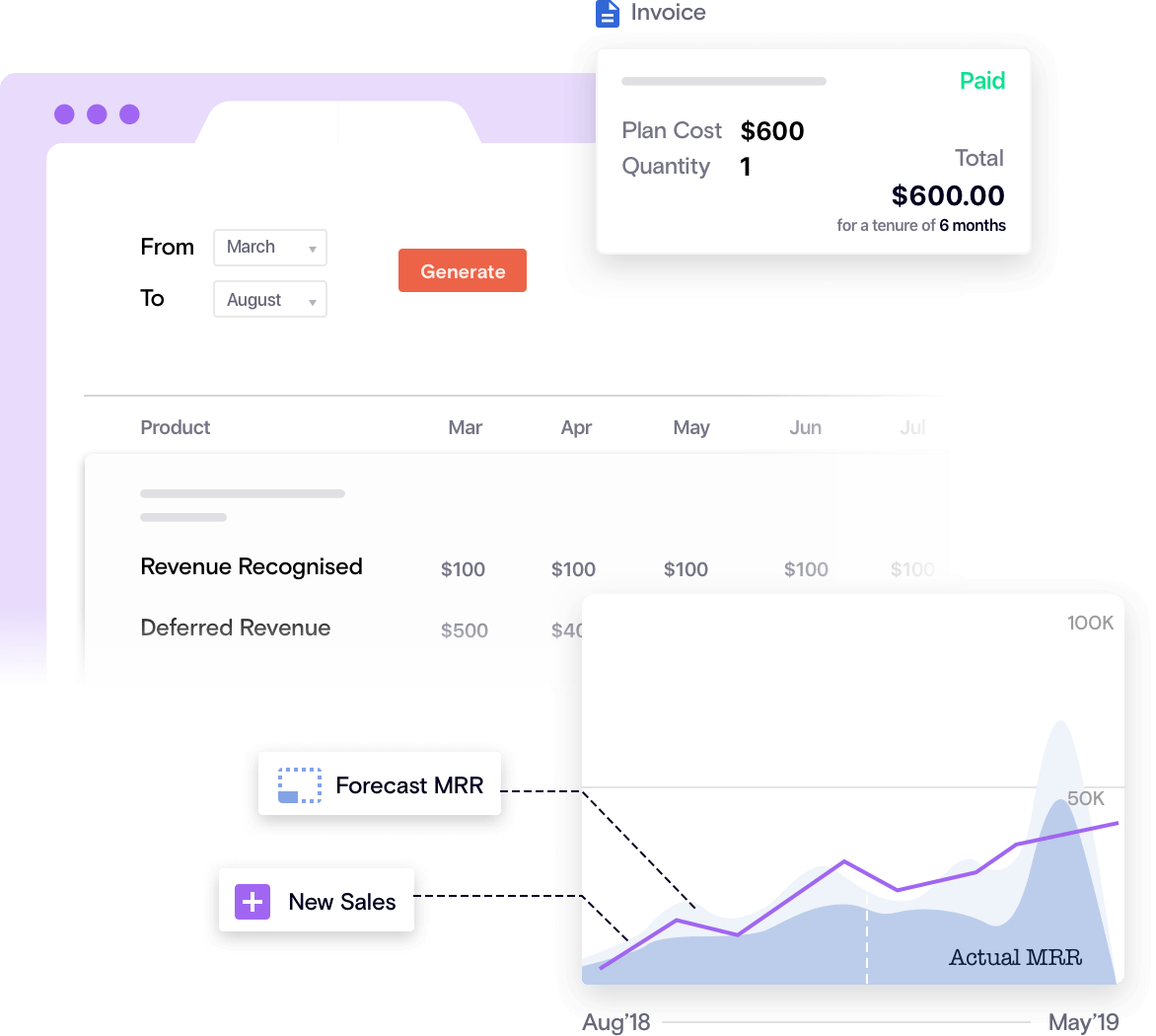
Here are some features you should expect from a mature system.
Operational Reports - Cart Abandonment
Finance and Audit Reports
Subscription metrics
Churn reports
A/R aging and Deferred Revenue reports
Cohort visualizations
Revenue reporting based on various dimensions - acquisition channels, geographies, coupons, subscription segments
Customizable dashboards for multiple levels of scrutiny
Your subscription metrics tell you stories. Get the power to read them, with Chargebee
Integrations
When it comes to choosing a subscription management platform, ease of integration with a CRM system is the number one evaluation criteria for customers across ARR of $50M - 500M+, followed by accounting/ERP tools integrations. This is for the sole reason that billing systems don't work in isolation, and as a core component of your revenue operations tech stack, it needs to have robust integration with a variety of business software:
Accounting and Finance software - QuickBooks, Xero, Sage Intacct, Oracle Netsuite
CRM - Salesforce
Help Desk - Zendesk, Freshdesk, Intercom, Groove
Analytics - Baremetrics, ChartMogul, ProfitWell, Google Analytics
Taxation - Avalara
Customer success - Natero
Marketing - Mailchimp, Klaviyo, Refersion, ReferralCandy
Collaboration - Slack, PieSync
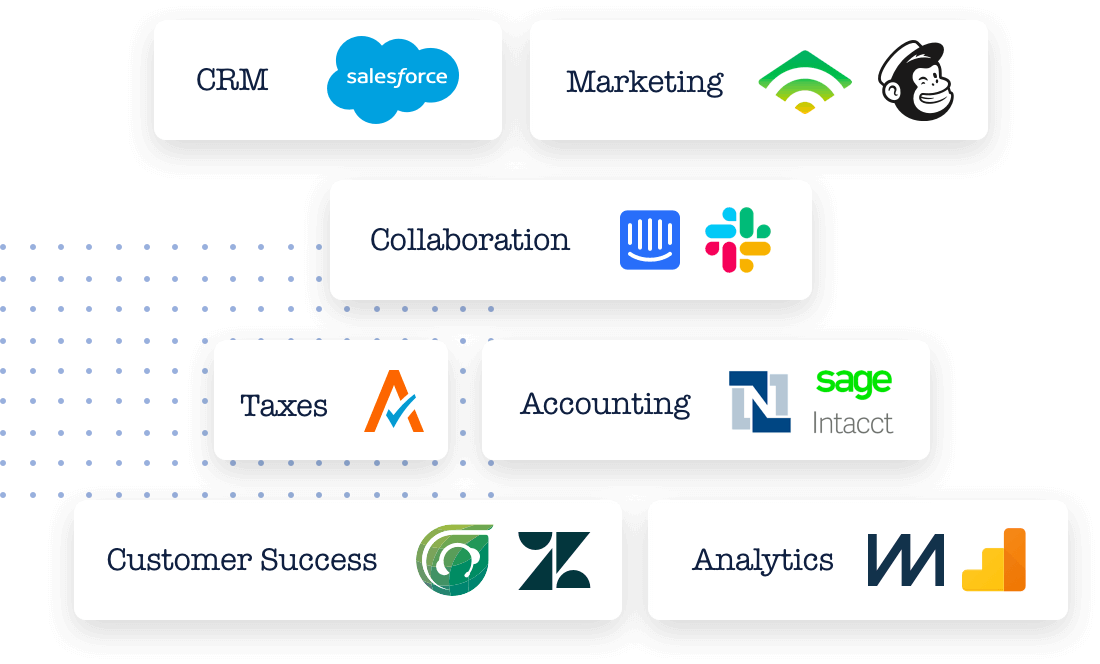
Checkout Chargebee’s wide range of integrations
A subscription management and recurring billing solution is not a single-function system. With so many different roles in your organization using it in many different ways, where does the solution rank in user-level access and internal security?
Here are some questions to help you grade:
Is access to the back office controllable with configurable roles and permissions?
Does the system allow user-level privileges?
Is the solution able to set up data-level security for each user?
Is it possible to set up action-level privileges for each user?
What billing system supports login security? Single sign-on? Multi-Factor Authentication (MFA)?
Compliance and Security
Compliance and security levels expected of a recurring billing software should be nothing short of best-in-class.
Is the system PCI-DSS Level 1 compliant?
Is the system SOC1 Type 1 compliant?
Does the system undergo constant vulnerability scanning?
How reliable is the billing provider's approach to data storage?
How do they handle GDPR, PSD2 regulations?
Does the solution mandate two-factor authentication for all its administrative operations?
Can the billing provider explain what measures are taken to ensure network security?

[While we are on this, how are you shaping up for PSD2? You might want to check out our must-read guide around SCA and PSD2 for subscription businesses.]
Service Capabilities Expected of a Billing Software
Beyond product features, you'll want to work with a vendor that can go above and beyond the boundaries of the software. This is especially true for a subscription billing software given how sensitive the data it handles is.
Here are some questions to help you assess relationship indicators:
Do they provide dedicated support that's hands-on with your team till the onboarding is complete?
Do they offer specialist consultation - in the form of a customer success team perhaps - during your relationship?
If you choose to switch billing solutions, will they port sensitive data securely and map it to another provider (Credit-card Data Portability)?
What Your Recurring Billing Platform Should Enable You To Do
Now that we've covered the product and service level capabilities in detail, here's what your tech stack should help you with:
Go to market faster
Whether you're launching a new feature or expanding into a new market, the only way to outperform your competitors is to move first.. When it comes to global expansion, integration with a subscription management tool that automates this will be your most significant advantage.
For instance, Study.com once served a single market, with a tiny course catalog and one payment gateway. After managing its subscriptions and handling complex billing operations with Chargebee, Study.com scaled painlessly to over 30 million users and five products. "Chargebee has helped us acquire a more diverse set of customers. This includes a significant number of international users who were unable to access the site previously," says Voitek Sobieszczanski, VP of Finance, Study.com.
Provide an unmatched user experience
Payment Experience
When a potential customer shows interest in your product, you should start nudging them to a successful purchase. A simple way to do that is to reduce all the friction:
A checkout page that loads within their window without any redirection,
User-friendly payment options that offer them digital wallet options are a sure-shot way to ensure a great payment experience.
Mobile payment options at the same price so that your customer doesn't have to open their laptop every time.
Billing Experience
The choice isn't limited to payment methods. Customers also expect flexibility in their billing terms and the option of paying in installments based on your pricing. A versatile billing tool that automates whatever billing logic you define on any user or plan level and can save you hours of labor.
Self-serve workflow
The simplest way to provide a positive customer experience is to let them manage their subscription. Freedom, a company that blocks distracting websites and apps on your computer and other mobile devices, improved their conversions by 33% after Chargebee's self-service portal enabled their customers to manage their subscriptions with ease, allowing Freedom to deliver a stellar billing experience.
Quick Pricing Experiments
Pricing is the most rewarding but difficult revenue lever to master. Identifying the appropriate price point is a critical step in developing the appropriate pricing plans and models. There are many different ways to price your products: Flat Fee, Usage-based and Hybrid
Each of these pricing models comes with its own set of advantages. What works for one firm may not work for another. So, how do you figure out what pricing model works for you? By experimenting. Start small by experimenting with your price points or completely change your pricing strategy. Either way, experiment with your pricing model to maximize value for customers and revenue for you.
For instance, the Superfoods Company used Chargebee's flexible product catalog to constantly roll out new price points and discounts, A/B test, and learn what combination of pricing, promotions, and plan lengths leads to the highest customer LTV. With competitive pricing, Superfoods achieved 4x growth in revenue in less than a year!
On-the-go Analytics
You don't stop at experimentation. You need reports and dashboards that give you actionable insights on what worked with your experiment or what didn't.
An analytics platform that provides a 360-degree view of your company's growth on a single dashboard and allows you to delve deeper into analyzing the root cause of all churn. It can spot the next best revenue-maximizing opportunity from a mile away.
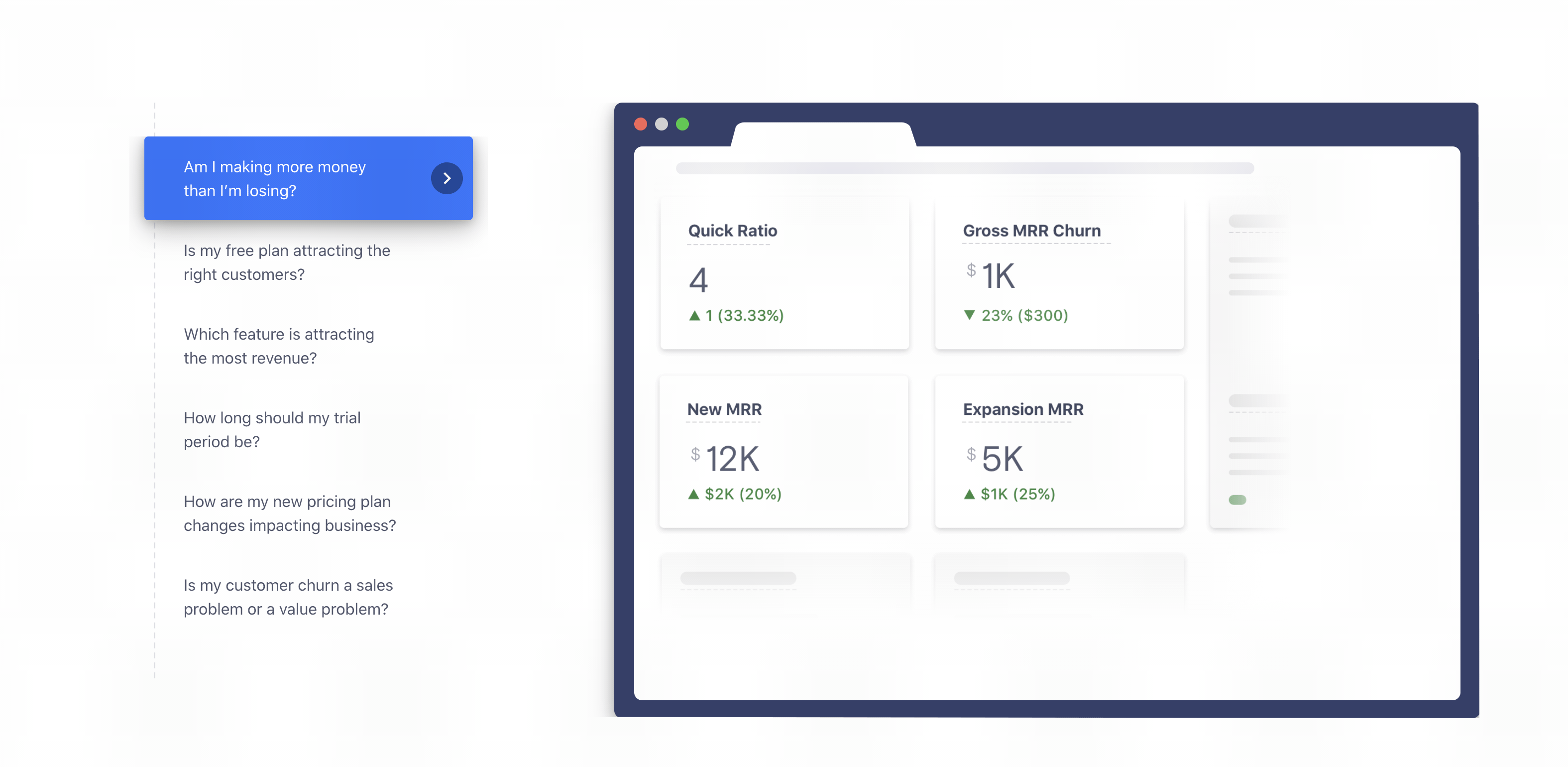
Seamless Integrations
Almost every business has payment gateways, accounting software, and more such tools in place before deciding that the functionality is limited in certain areas. It could be the inability to experiment or scale - before understanding the need to upgrade to a more comprehensive billing software to achieve hypergrowth.
If you find yourself in a similar spot, the first question you should ask yourself is, "Will this tool integrate seamlessly into my already existing tech stack?" Hence, ensure that the new tool integrates seamlessly into your existing processes. Chargebee integrates with many different tools across different organizational verticals like finance and marketing to give you the smooth-running operations you crave.
Fishburners' Financial Controller, Aayush Patel, says, "The (Chargebee + Xero) integration saves our finance team 8 hours a week from manual work. Our accounts team has gone from doing admin billing work to proactively analyzing our revenue figures in Chargebee to create strategies to sustain revenue growth."
How Fishburners used Chargebee and Xero to save 105 hrs/month by automating subscription accounting
The Best Subscription Billing Software in The Market Today
It'd be unfair to leave without giving you a sense of the best billing software in the market today and how they compare. Here's a loud disclaimer: Chargebee is a subscription billing software, and it just so happens that customers peg us as THE best 😎.
Chargebee has been rated the undisputed leader in the subscription management, billing, and analytics categories.
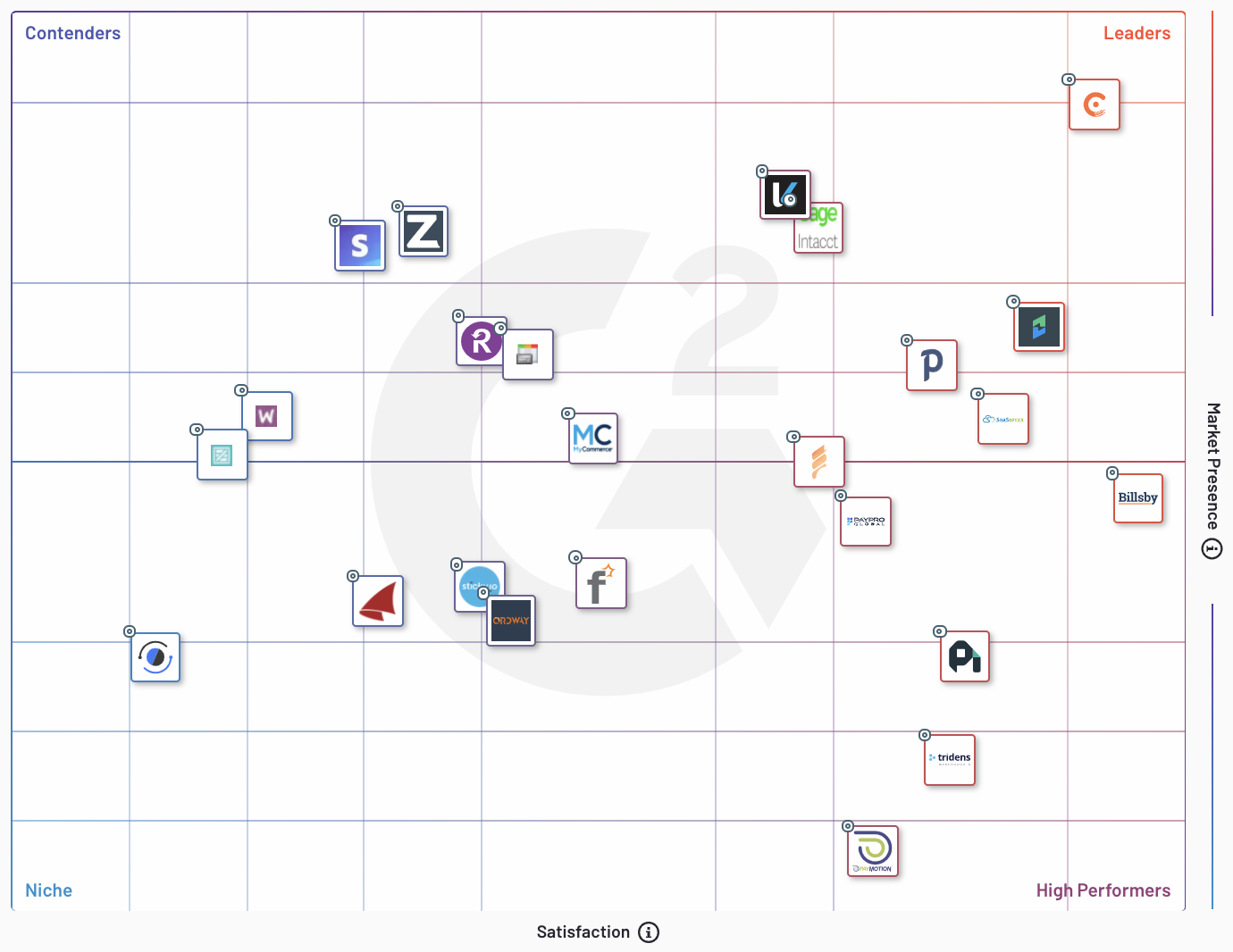
G2 2021 Survey - Best Subscription Management Software
I’ll leave you with our in-depth comparisons against some of the most popular subscription billing software in the market today.
Stripe Billing Recurly Chargify Zuora
Subscription Management & Billing With Chargebee
The financial benefits of using a robust subscription billing and revenue management system to support your business goals far outweigh the effort and resources you spend without one. Additionally, the right subscription management platform can put you on the path to exponential growth.
Chargebee enables businesses to test and scale their subscription revenue workflow, bringing strategy out of the boardroom and into the real world.
With Chargebee, allow yourself the freedom to test, launch, and scale strategies as quickly as you can think of them.